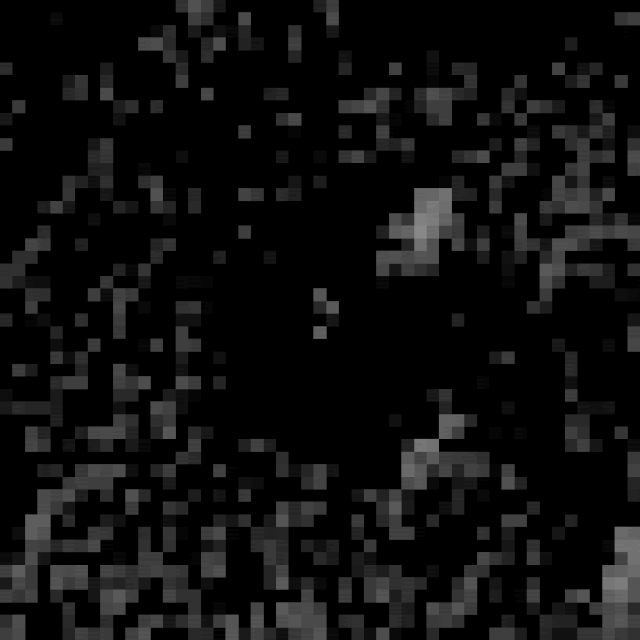NASA Planet-Hunting Telescope Spots Massive Burp from a Comet

Scientists have caught their best-ever look at a comet belching out ice, dust and gas — and the observations came courtesy of a mission designed to hunt for alien worlds.
Comet outbursts are natural but difficult to spot, since scientists don't quite understand their cause. What's clear is the result: A massive blast of material that makes the comet temporarily appear much brighter. New research used lucky observations gathered by NASA's Transiting Exoplanet Survey Satellite (TESS) of such an outburst on Comet 46P/Wirtanen before it swung past Earth a year ago. Scientists processing the observations suggest that the event could have left a crater 65 feet (20 meters) across on the comet's icy surface.
"Wirtanen was a high priority for us because of its close approach in late 2018, so we decided to use its appearance in the TESS images as a test case to see what we could get out of it," lead author Tony Farnham, an astronomer at the University of Maryland, said in a statement. "We did so and were very surprised!"
Related: Amazing Photos: Brilliant Comet 46P/Wirtanen Wows Stargazers
Although Farnham and his colleagues could calculate when TESS would catch sight of the comet, they had no idea Wirtanen would put on such a show for them.
"We can't predict when comet outbursts will happen," Farnham said. "But even if we somehow had the opportunity to schedule these observations, we couldn't have done any better in terms of timing. The outburst happened mere days after the observations started."
The TESS spacecraft looks for planets that frequently orbit their stars by taking regular photos of a swath of the sky for about a month at a time before shifting to the next swath. Planets appear as brief, repetitive dips in a star's light. But the format means that TESS observations are useful for studying all sorts of brief phenomena, like supernovas and disruptions surrounding a black hole.
Get the Space.com Newsletter
Breaking space news, the latest updates on rocket launches, skywatching events and more!
Or a cometary outburst. The team found that TESS had managed to watch the entire lifecycle of the outburst, gathering the most detailed observations of such an event ever, with a new image every 30 minutes for 20 days. With that data, the scientists were able to identify different phases in an outburst for the first time.
The event began on Sept. 26, when an initial burst lasted for an hour. The next stage, which saw the comet brighten still more, lasted about 8 hours; the researchers believe it was caused by reflective dust spreading around the comet. Finally, the comet faded over the course of nearly three weeks.
Because the scientists had such detailed observations of the event, they were able to estimate about how much material the comet spewed during the outburst: about 2.2 million lbs. (1 million kilograms). That's a dramatic-enough belch to create a crater about 65 feet (20 m) across, according to their calculations.
The researchers hope they may find similar outbursts in data gathered by TESS, which should happen to image about 50 comets during its first two years of work. (The mission launched in April 2018 and took its first science data in August of that year.)
"While TESS is a powerhouse for discovering planets orbiting nearby, bright stars, its observing strategy enables so much exciting additional science," Padi Boyd, TESS project scientist at NASA's Goddard Space Flight Center in Maryland, who is not a co-author on the new research, said in a NASA statement. "It's exciting to see scientists identifying which data are of interest to them, and then doing all kinds of additional serendipitous science beyond exoplanets."
The new research is described in a paper published Nov. 22 in The Astrophysical Journal Letters.
- NASA's New Planet-Hunter TESS Beams 'First Light' Image to Earth
- Photos: Spectacular Comet Views from Earth and Space
- NASA's TESS Exoplanet-Hunting Mission in Pictures
Email Meghan Bartels at mbartels@space.com or follow her @meghanbartels. Follow us on Twitter @Spacedotcom and on Facebook.

Join our Space Forums to keep talking space on the latest missions, night sky and more! And if you have a news tip, correction or comment, let us know at: community@space.com.

Meghan is a senior writer at Space.com and has more than five years' experience as a science journalist based in New York City. She joined Space.com in July 2018, with previous writing published in outlets including Newsweek and Audubon. Meghan earned an MA in science journalism from New York University and a BA in classics from Georgetown University, and in her free time she enjoys reading and visiting museums. Follow her on Twitter at @meghanbartels.
